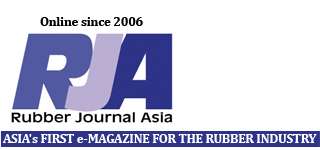RUBBER climbed, heading for the best weekly gain in three years, amid optimism about economic growth after U.S. jobless claims dropped to the lowest level in almost four years and Spanish and French borrowing costs fell.
June-delivery rubber climbed as much as 2.6% to 313 yen/kg (US$4,060/MT), the highest level since Oct. 31, before trading at 312.7 yen on the Tokyo Commodity Exchange at 12:20 p.m. The most-active contract has gained 13 percent this week, the most since the week ended Dec. 19, 2008.
Asian stocks extended a global rally after a report showed U.S. initial jobless claims dropped by 50,000 to 352,000. Spain and France sold bonds at lower yields, boosting optimism the region’s sovereign-debt crisis is being contained.
“Concerns about the European crisis are easing, spurring investor purchases of riskier assets,” Takaki Shigemoto, an analyst at research company JSC Corp. in Tokyo, said recently in a phone interview. “Rubber also drew support from expectations for China’s monetary easing and Thailand’s price-support plan.”
Thailand’s government plans to spend 17 B baht (US$539 million) to buy rubber at above-market rates to boost the domestic price to 120 baht/kg, Deputy Prime Minister and Commerce Minister Kittiratt Na-Ranong said Jan. 17. Chinese bank lending in the first quarter may rise from a year earlier, the Shanghai Securities News reported.
Thai rubber prices slumped 29% last year as the European crisis deepened concerns the global recovery may stall, weakening demand for the commodity used in tyres. “The appropriate and sustainable level” for rubber is at 120 baht a kilogram, Agriculture Minister Theera Wongsamut said.
May-delivery rubber gained 2.6 % to 27,650 yuan (US$ 4,378) a tonne on the Shanghai Futures Exchange. The Thai cash price jumped 2.9 % to 118.05 baht/kg recently, according to the Rubber Research Institute of Thailand.
Source: Bloomberg
